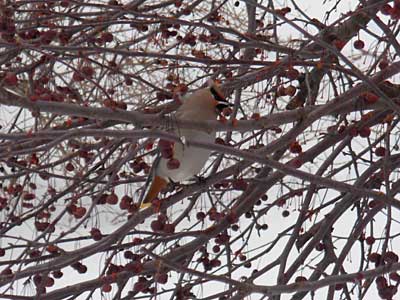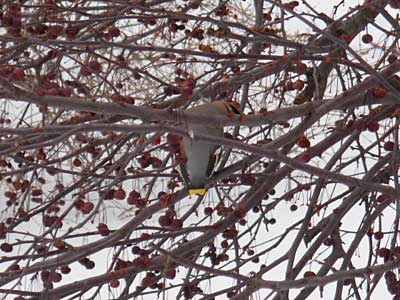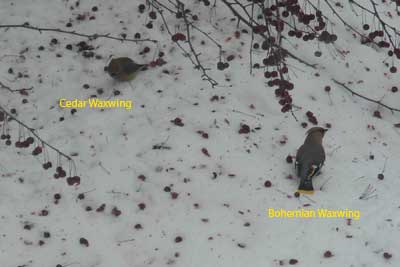When we got home from the lumber yard last Saturday, Arlene got out of the car at the end of the driveway to check the mailbox, and I drove up to the garage. Before I got out, I saw several birds flying from the right of the driveway up to a tree beyond the house. They didn’t look like mourning doves, but it wasn’t until more flew back and into the crabapple tree that I figured out what they were. Arlene heard me calling to her, “Hey, how do you tell Bohemian waxwings from cedar waxwings? It’s the cinnamon under tail coverts, isn’t it?

Bohemian waxwings are hard to find in Massachusetts. We saw some weveral years ago in Royalston, in central Mass, far away and only because other birders pointed them out. We got a good look at a flock on a telephone wire in Truro five or six years ago, after driving back and forth on 6A a couple of times trying to find them. Here were 200 of them, chowing down on crabapples in our yard, and they didn’t mind my being there in the least.

Both species of waxwings have the yellow band at the end of the tail, the overall gray color, and the mask. Both eat fruit, and like cherries and crabapples. The Bohemians are a little larger, have the cinnamon color under the tail, and have more pattern on the wings. Cedars have yellow on the belly. We’re pretty sure we picked out one Cedar among the flock.

“BOWA” is the code for BOhemian WAxwing used by bird banders.